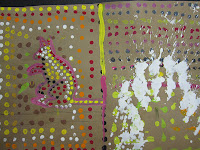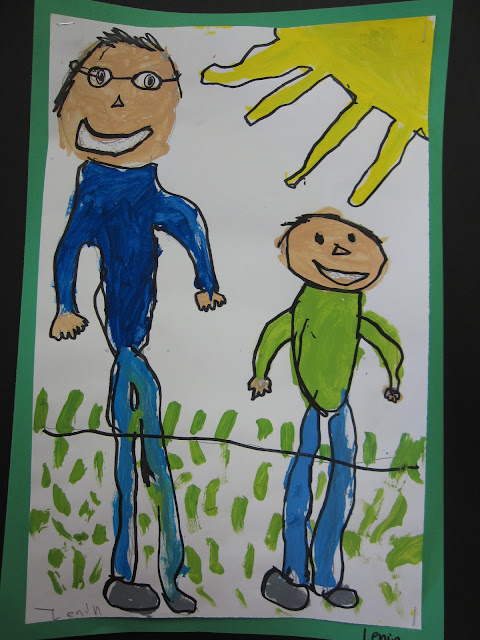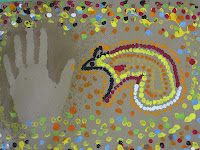
4th grade students learned
about the artwork of the aboriginal people of Australia. This
group of people is indigenous to Australia, just like Native Americans are
indigenous to the United
States.
The students learned that the Aborigines
are known for their dot paintings and x-ray paintings. As you can probably
imagine, dot paintings are made with only dots, and x-ray paintings show the
inside of the subject they painted. Students chose an animal that lives in
Australia to paint in the dot and
x-ray painting styles of the Aborigines. They signed their artwork with their
handprint, something the Aborigines do as well.

Los estudiantes de 4º grado aprendieron sobre el arte del
pueblo aborigen de Australia. Este grupo de personas son indígenas de Australia,
igual que los nativos americanos son los indígenas de los Estados
Unidos.
Los estudiantes aprendieron que los aborígenes son
conocidos por sus obras de puntitos y pinturas estilo rayos x. Como se podrán
imaginar, las obras de puntitos son pinturas hechas solo de puntos y las
pinturas estilo rayos x muestran lo de adentro del sujeto de la pintura. Los estudiantes escogieron un animal que viva
en Australia para pintar en los estilos de puntitos y rayos x de los aborígenes.
Ellos firmaron sus obras de arte con la impresión de sus manos, algo que también
hacen los aborígenes.






















